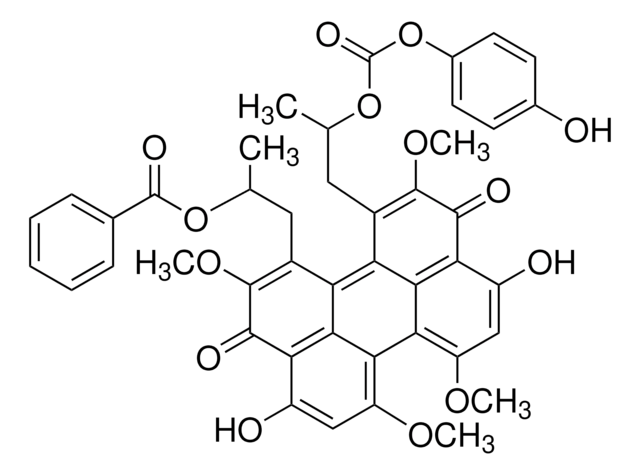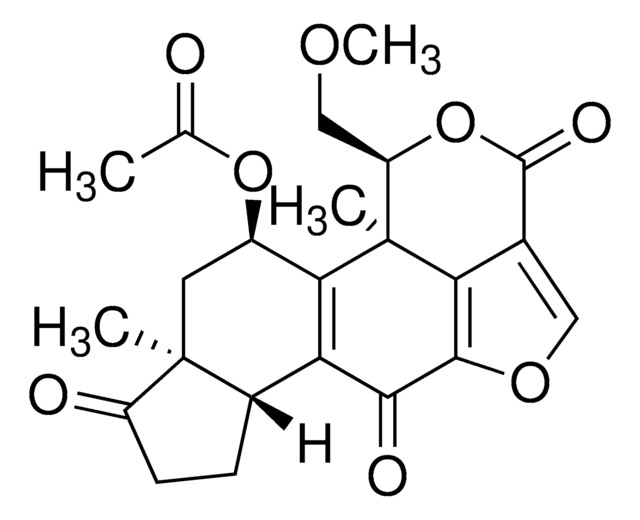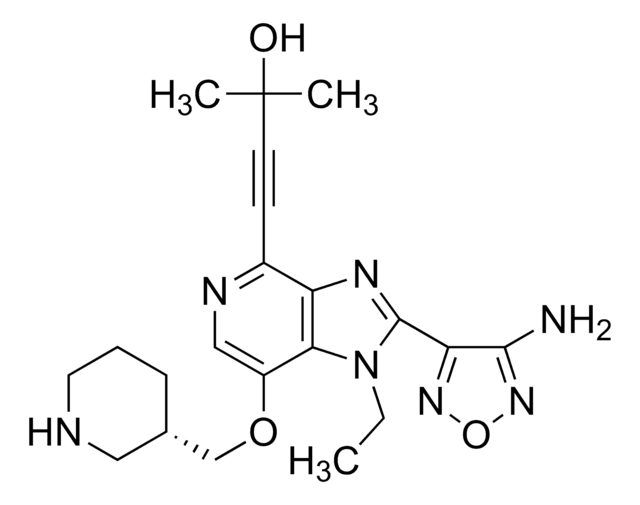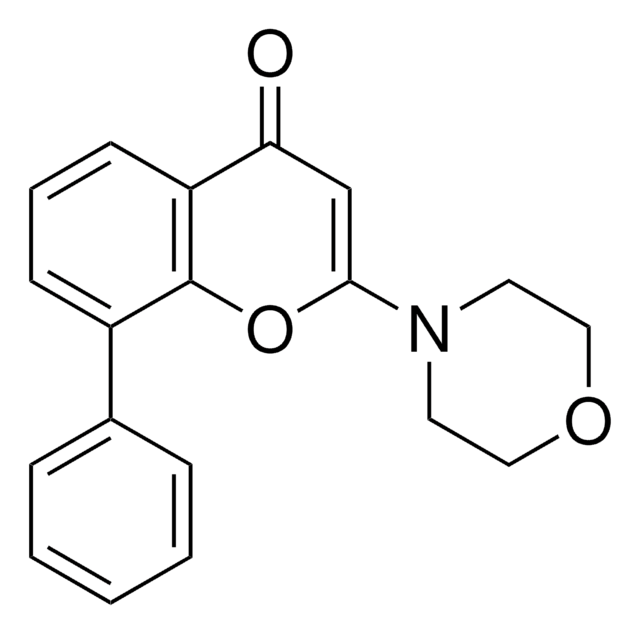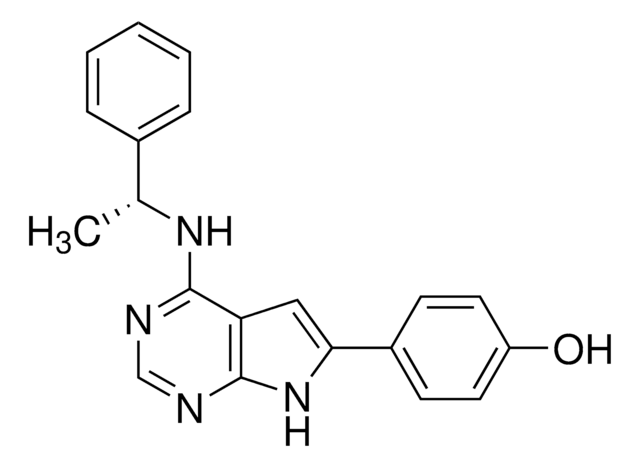T3830
Triciribine hydrate
≥97% (HPLC)
Synonym(s):
API-2, Akt/PKB Signaling Inhibitor-2, Inhibitor V, NSC 154020, TCN, VD-0002
About This Item
Recommended Products
Quality Level
Assay
≥97% (HPLC)
form
powder
color
tan
solubility
DMSO: >10 mg/mL
storage temp.
2-8°C
SMILES string
O.Cn1nc(N)c2cn([C@@H]3O[C@H](CO)[C@@H](O)[C@H]3O)c4ncnc1c24
InChI
1S/C13H16N6O4.H2O/c1-18-11-7-5(10(14)17-18)2-19(12(7)16-4-15-11)13-9(22)8(21)6(3-20)23-13;/h2,4,6,8-9,13,20-22H,3H2,1H3,(H2,14,17);1H2/t6-,8-,9-,13-;/m1./s1
InChI key
SPGRLWCWHWRPHX-DOKXERMVSA-N
Gene Information
human ... AKT1(207)
mouse ... AKT1(11651)
rat ... AKT1(24185)
Application
Biochem/physiol Actions
Features and Benefits
Preparation Note
Storage Class Code
11 - Combustible Solids
WGK
WGK 3
Flash Point(F)
Not applicable
Flash Point(C)
Not applicable
Choose from one of the most recent versions:
Already Own This Product?
Find documentation for the products that you have recently purchased in the Document Library.
Articles
Sigma-Aldrich presents an article about how proliferating cells require the biosynthesis of structural components for biomass production and for genomic replication.
Our team of scientists has experience in all areas of research including Life Science, Material Science, Chemical Synthesis, Chromatography, Analytical and many others.
Contact Technical Service
